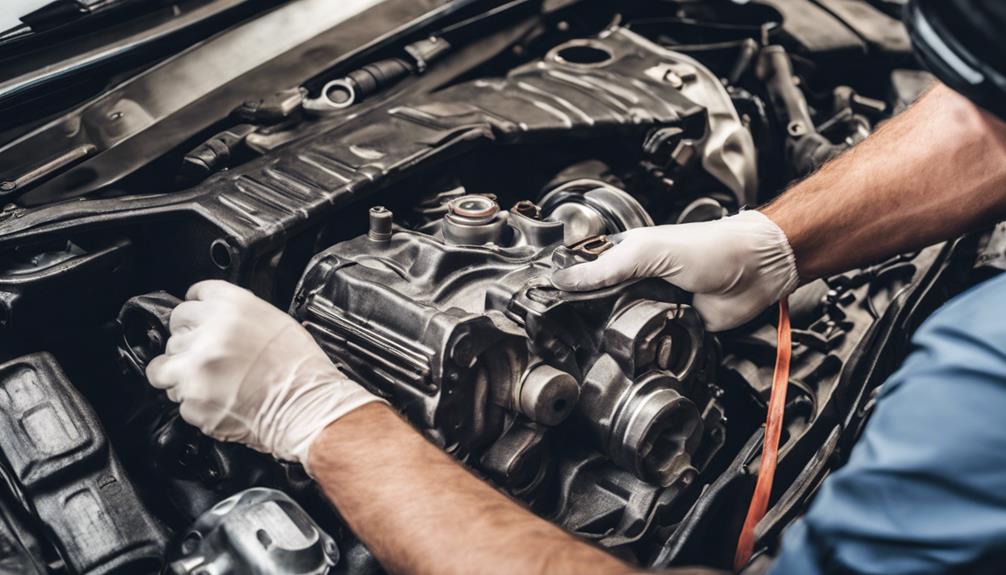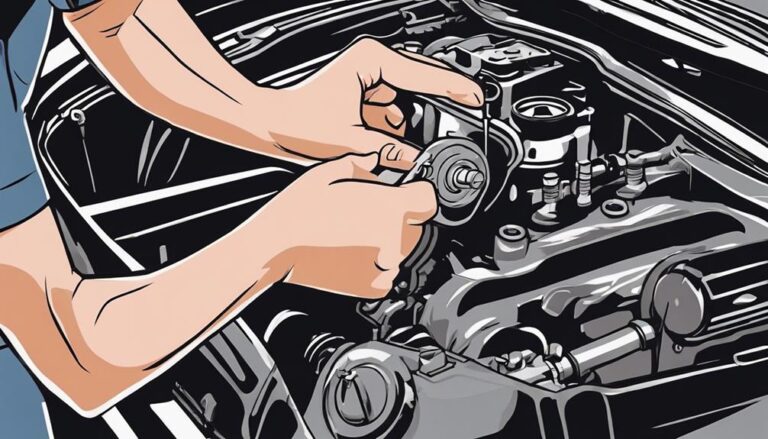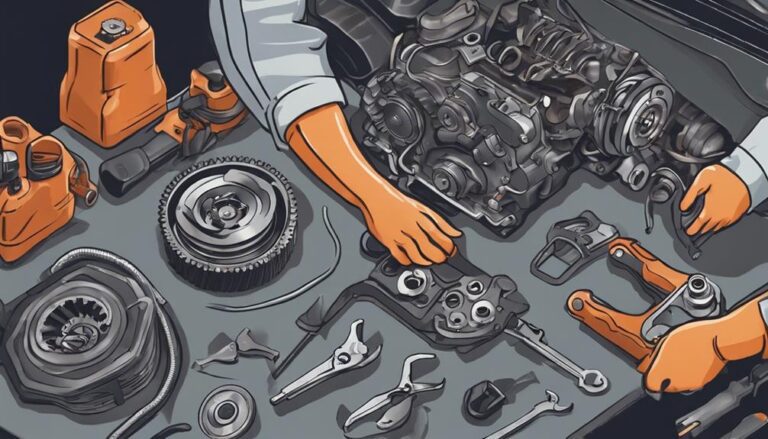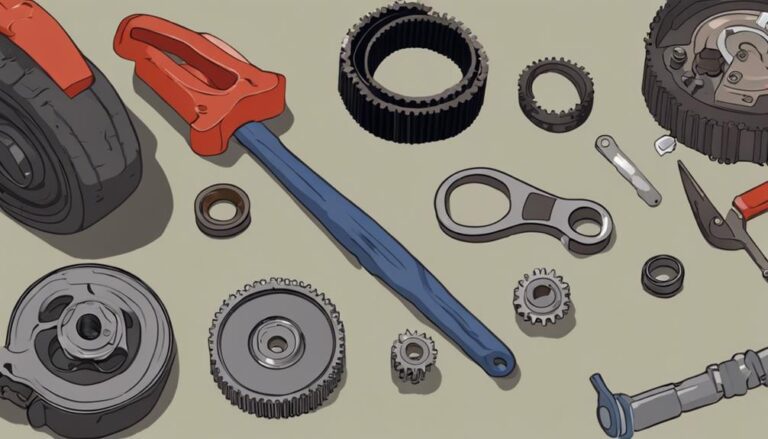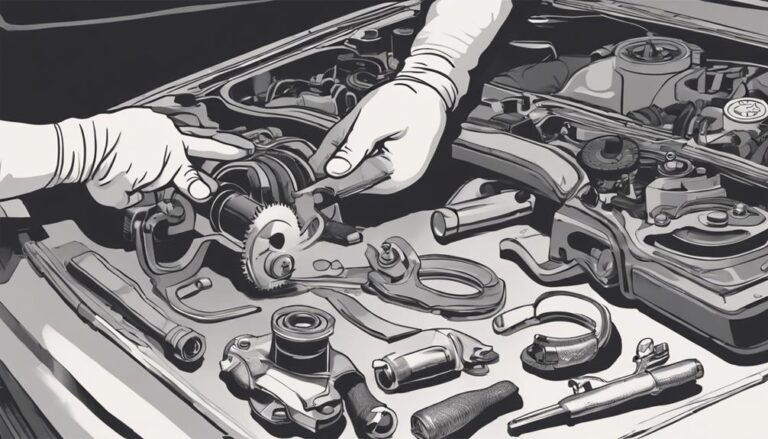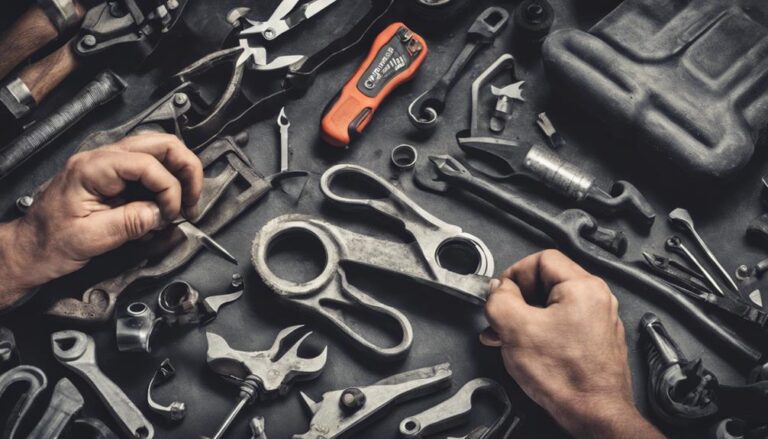Preventing Drive Belt Slipping: Solutions and Maintenance
If you've ever encountered the frustrating issue of drive belt slipping, you know the hassle it can cause in your machinery.
But fear not, there are practical solutions and maintenance techniques to keep this problem at bay. By understanding the common culprits behind belt slipping and implementing proper preventative measures, you can guarantee smooth operations and avoid costly downtime.
Stay tuned to discover the key strategies that will help you maintain perfect belt performance and reliability.
Key Takeaways
- Regularly inspect tension and alignment to prevent drive belt slipping.
- Proper tension adjustment and maintenance are essential for optimal performance.
- Timely belt replacement and alignment ensure efficient operation.
- Monitoring, lubricating, and promptly addressing issues enhance drive belt longevity.
Common Causes of Drive Belt Slipping
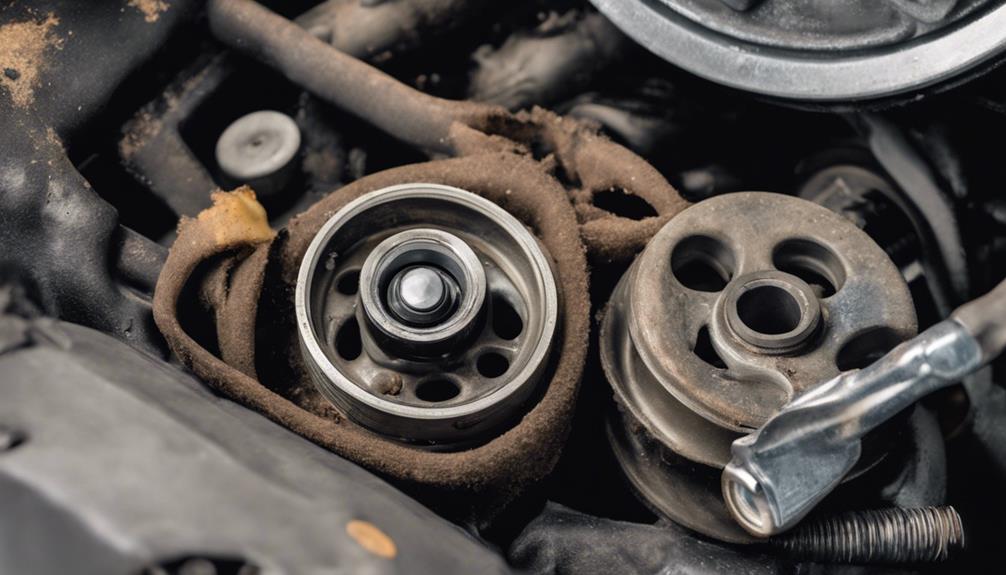
To identify common causes of drive belt slipping, examine the tension and alignment of the belt regularly. Incorrect tension is a frequent culprit leading to belt slippage. When the tension is too loose, the belt may not grip the pulleys effectively, causing it to slip. Conversely, excessive tension can strain the belt, leading to premature wear and potential slipping as well. Proper tension is important for best belt performance.
Lubrication issues can also contribute to drive belt slipping. Inadequate or excessive lubrication can impact the friction between the belt and pulleys. Insufficient lubrication may result in increased friction, causing the belt to slip due to the added resistance. Conversely, over-lubrication can lead to slippage by reducing the belt's grip on the pulleys.
Regularly monitoring tension levels and ensuring proper lubrication can help mitigate the chances of drive belt slipping. By addressing these common causes promptly, you can maintain the efficiency and longevity of your drive belt system.
Importance of Regular Belt Inspection
Regularly inspecting your drive belt system is imperative for detecting potential issues early and ensuring peak performance. By conducting routine checks, you can reap various benefits such as increased lifespan of the drive belt, improved efficiency, and reduced risk of unexpected breakdowns. Ignoring regular inspections can lead to severe consequences including belt wear, misalignment, and ultimately drive belt slipping. Here is a table summarizing the benefits and consequences of regular belt inspections:
| Benefits | Consequences |
|---|---|
| Increased drive belt lifespan | Belt wear |
| Improved system efficiency | Misalignment |
| Reduced risk of unexpected breakdowns | Drive belt slipping |
Regular belt inspections are a proactive approach to ensuring your drive belt system operates smoothly. By staying vigilant and addressing any potential issues promptly, you can prevent costly repairs and maintain peak performance.
Proper Tensioner Adjustment Techniques
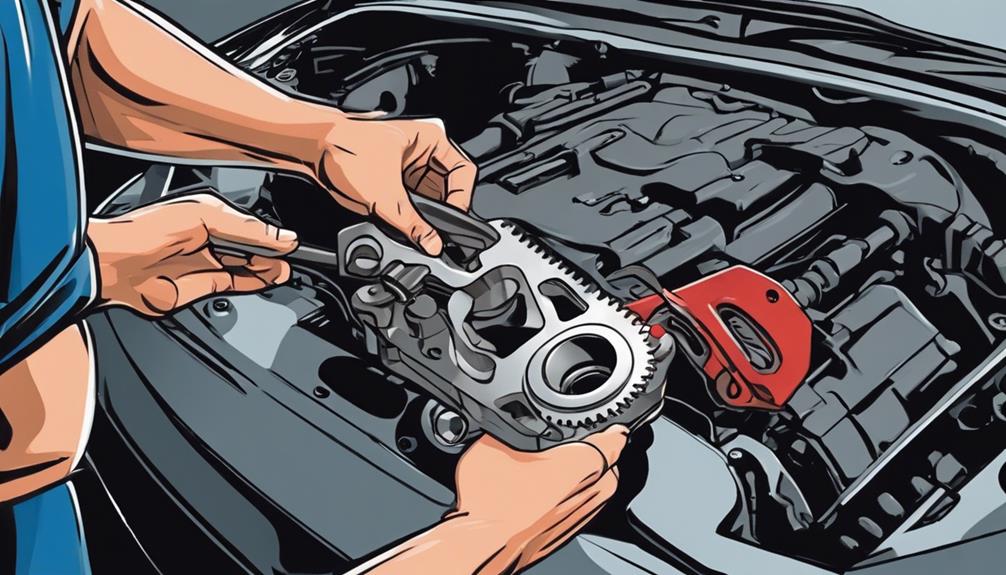
For ideal drive belt performance, precise adjustment techniques for the tensioner are essential to maintain proper tension and prevent slipping. To guarantee your drive belt functions at its best, follow these guidelines for adjustment precision and tensioner maintenance:
- Use the Right Tools: When adjusting the tensioner, always use the manufacturer-recommended tools to achieve the correct tension level.
- Check Alignment Regularly: Inspect the alignment of the tensioner and pulleys frequently to ensure proper function and prevent premature wear.
- Follow Manufacturer Guidelines: Refer to the vehicle manual for specific instructions on tensioner adjustment intervals and techniques to avoid over-tensioning or under-tensioning the belt.
Belt Replacement: When and How
When replacing the drive belt, make sure you follow the recommended procedures and guidelines to maintain top performance and prevent potential issues. Start by inspecting the belt for any signs of wear, such as cracks, fraying, or glazing. It's important to replace the belt if you notice any of these issues to prevent belt slipping and other mechanical problems.
To begin the replacement process, consult your vehicle's manual for specific instructions on how to access the drive belt. Typically, this involves loosening the tensioner to release the old belt and then carefully removing it from the pulleys. Take note of the belt's routing to make sure the new belt is installed correctly.
When installing the new belt, make sure it fits snugly around the pulleys and aligns properly. Adjust the tensioner as needed to achieve the manufacturer's specified tension. Once the new belt is in place, start the engine and check for any unusual noises or vibrations that could indicate improper installation. Regular belt inspection and timely replacement are important for the longevity and efficiency of your vehicle's drive system.
Maintenance Tips for Drive Belts
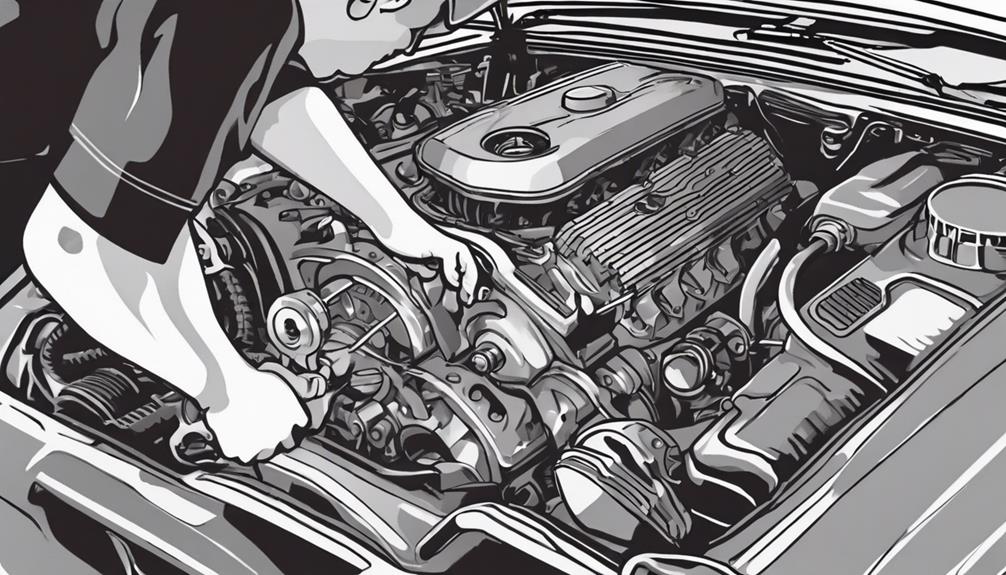
Inspect the drive belt regularly to guarantee peak performance and prevent potential issues. Proper maintenance is key to ensuring the longevity of your drive belt. Here are some essential tips to keep your drive belt in peak condition:
- Belt lubrication: Regularly lubricate the drive belt according to the manufacturer's recommendations. Proper lubrication reduces friction, prolonging the lifespan of the belt and ensuring smooth operation.
- Temperature effects: Be mindful of temperature changes as they can impact the drive belt's performance. Extreme heat or cold can cause the belt to expand or contract, affecting its tension and leading to potential slipping issues. Monitor temperature variations and adjust belt tension as needed.
- Visual inspection: Regularly inspect the drive belt for signs of wear, cracks, or fraying. Address any issues promptly to prevent further damage and avoid unexpected breakdowns. A quick visual check can go a long way in maintaining the efficiency of your drive belt system.
Frequently Asked Questions
Can Extreme Weather Conditions, Such as Extreme Heat or Cold, Cause Drive Belt Slipping?
Extreme weather conditions, like intense heat or cold, can indeed cause drive belt slipping. High humidity can impact belt traction, while temperature fluctuations affect belt tension, potentially leading to slippage issues. Regular inspections and maintenance are essential.
Are There Any Specific Lubricants or Treatments That Can Be Applied to Prevent Drive Belt Slipping?
To prevent drive belt slipping, consider applying specific lubricants or treatments. These can aid in reducing friction and ensuring peak belt performance. Regular maintenance and proper belt treatment options are essential for preventing issues.
Can Drive Belt Slipping Be a Sign of a Larger Issue Within the Vehicle's Engine or Components?
Is drive belt slipping indicating a larger engine trouble? Engine diagnostics and maintenance can expose underlying issues. Check belt tension and alignment. Addressing these can prevent expensive repairs down the road. Stay proactive for a smoother ride.
How Often Should Drive Belts Be Replaced, Even if There Are No Visible Signs of Wear or Slipping?
You should replace drive belts periodically, regardless of visible wear or slipping. Proper maintenance guarantees belt tension and alignment, extending drive belt lifespan and preventing unexpected failures. It's a proactive approach to keep your vehicle running smoothly.
Are There Any Alternative Materials or Types of Drive Belts That Are Less Prone to Slipping Than Traditional Rubber Belts?
When exploring material alternatives for drive belts, consider factors like durability and friction coefficients. Regular tension adjustments and maintenance are crucial for peak performance. Consult with a technician for guidance on selecting the most suitable belt for your needs.
Conclusion
Don't let drive belt slipping disrupt your vehicle's performance. By understanding the common causes of slipping, regularly inspecting your belts, properly adjusting tensioners, and knowing when to replace them, you can prevent this issue.
Remember, maintenance is key to keeping your drive belts in top condition. So, take the time to care for them properly and keep your vehicle running smoothly.
Don't wait until a slipping belt causes a breakdown – stay proactive and keep your drive belts in check.

